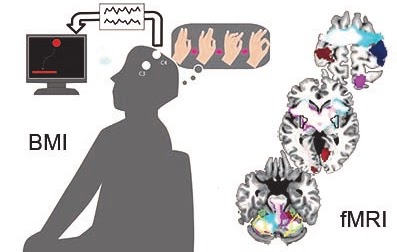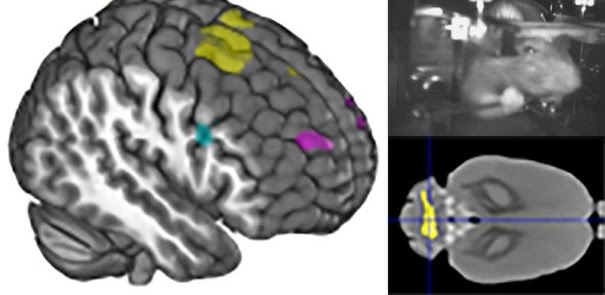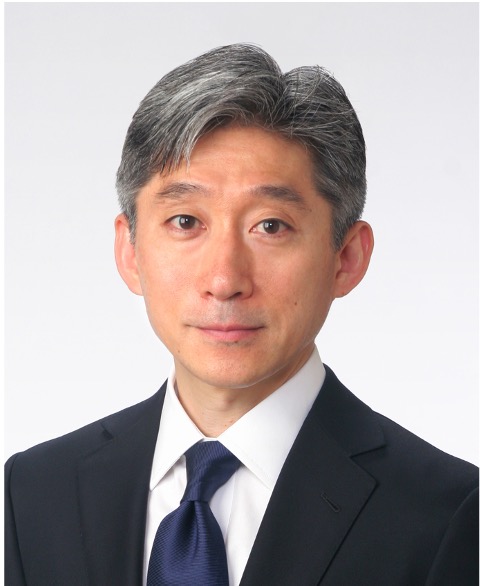Takashi Hanakawa

氏名Name
Takashi Hanakawa
所属・職名Affiliation, Title, etc.
Division of Integrated Neuroanatomy and Neuroimaging, Department of Neuroscience, Kyoto University Graduate School of Medicine, Professor
Human Brain Research Center, Kyoto University Graduate School of Medicine, Director
研究室HPWebsite
一言メッセージShort Message
本プロジェクトでの研究概要Outline of the research in this project
It has become clear that neurodegenerative diseases such as Alzheimer’s disease (AD), dementia with Lewy bodies (LBD), and Parkinson’s disease (PD) exhibit both disease-specific and disease-common abnormalities. The presence of such cross-disease abnormalities poses a challenge to the development of disease-modifying therapies based on specific diagnoses. For example, episodic memory impairment, which has traditionally been considered characteristic of AD, is also present in LBD and PD, and amyloid-β accumulation in the brain is observed in approximately half of LBD cases. We are working to elucidate the pathology of neurodegenerative diseases from a new perspective through cohort studies that encompass AD, LBD, and PD, as well as through the development of technologies that integrate brain MRI data obtained during life with cellular and molecular information from postmortem brains. Here, we aim to identify candidate reservoir/resilience mechanisms that help maintain brain function despite aging using MRIs acquired from healthy elderly individuals and patients with neurodegenerative diseases. Furthermore, we will delve deeper into the molecular and cellular basis of these mechanisms. By sharing our findings with other research teams, we hope to contribute to developing new disease-modifying therapies.

これまで主な研究内容Outline of main research so far
"Integration of macroscopic and microscopic imaging to understand neuroplasticity in mammalians including humans"
We have developed multi-modal neuroimaging by integrating non-invasive macroscopic imaging, including MRI and electroencephalography. We mainly use MRI because of its accurate spatial localization ability in combination with EEG, which has superior time resolution. We also develop intervention methods for treating neurological disorders using our multi-modal neuroimaging and machine learning techniques. We aim to obtain insight into motor, sensory, and cognitive control in healthy people and patients with neurological disorders. We proved neuroplasticity in adult humans by showing increased gray matter volume and white matter integrity through learning; however, the neurobiological mechanisms behind this macroscopic neuroplasticity remain unknown (Fig). To understand the biological mechanisms behind neuroplasticity, we develop new technology to connect macroscopic neuroplasticity with neurobiological information. We hope to apply this new technique to neuropathological examination and brain dissection training for medical students.


主な経歴・受賞歴等Career, Awards, etc.
Career
- 1991
- Kyoto University Faculty of Medicine(MD)
- 1992-1995
- Clinical Training(Board-certified Neurologist, Fellow of the Japanese Society of Internal Medicine)
- 1996-1999
- Kyoto University Graduate School of Medicine(PhD)
- 2000-2002
- National Institute of Neurological Disorders and Stroke, National Institutes of Health, Clinical Fellow
- 2002-2005
- Kyoto University Graduate School of Medicine, Human Brain Research Center, Assistant Professor
- 2005-2011
- National Center of Neurology and Psychiatry, National Institute of Neuroscience, Department of Functional Brain Anatomy, Section Chief
- 2011-2024
- National Center of Neurology and Psychiatry, Integrative Brain Imaging Center, Director
- 2019-
- Kyoto University Graduate School of Medicine, Department of Integrated Neuroanatomy and Neuroimaging, Professor
- 2022-
- yoto University Graduate School of Medicine, Human Brain Research Center, Director
Invited Lectures
- 2024
- Advanced neuroimaging and AI. Seul National University, Korea, 2024.
- UK-Japan workshop in multimodal neuroimaging. The Royal Society, Chicleley Hall, UK, 2012
主要業績Major Publications
Yoshinaga K, Matsushima T, Abe M, Takamura T, Togo H, Wakasugi N, Sawamoto N, Murai T, Mizuno T, Matsuoka T, Kanai K, Hoshino H, Sekiguchi A, Fuse N, Mugikura S, Tohoku Medical Megabank Brain Magnetic Resonance Imaging Study (TMMbMRI), Parkinson’s and Alzheimer’s disease Dimensional Neuroimaging Initiative (PADNI), Hanakawa T: Age-disproportionate atrophy in Alzheimer’s disease and Parkinson’s disease spectra. Alzheimer's Dement (Amst) 17(1): e70048, 2025. doi: 10.1002/dad2.70048
Sakato Y, Shima A, Terada Y, Takeda K, Sakamaki-Tsukita H, Yoshimura K, Nishida A, Wada I, Furukawa K, Kambe D, Togo H, Mukai Y, Sawamura M, Nakanishi E, Yamakado H, Fushimi Y, Okada T, Takahashi Y, Nakamoto Y, Takahashi R, Hanakawa T, Sawamoto N: Delineating three distinct spatiotemporal patterns of brain atrophy in Parkinson’s disease. Brain 147(11): 3702-3713, 2024. doi: 10.1093/brain/awae303
Matsushima T, Yoshinaga K, Wakasugi N, Togo H, Hanakawa T, Japan Parkinson's Progression Markers Initiative (J-PPMI) study group. Functional connectivity-based classification of rapid eye movement sleep behavior disorder. Sleep Med 115:5-13, 2024. doi: 10.1016/j.sleep.2024.01.019
Matsuoka T, Oya N, Narumoto J, Morii-Kitani F, Niwa F, Mizuno T, Akazawa K, Yamada K, Abe M, Takano H, Wakasugi N, Shima A, Sawamoto N, Ito H, Toda W, Hanakawa T, Parkinson’s and Alzheimer’s disease Dimensional Neuroimaging Initiative: Reduced pineal volume may be associated with amyloid pathology and not with putative Lewy body pathology. J Neurol Neurosurg Psychiat 95(8):791-792, 2024. doi: 10.1136/jnnp-2023-332252.
Hanakawa T, Hotta F, Nakamura T, Shindo K, Ushiba N, Hirosawa M, Yamazaki Y, Sato Y, Takai S, Mizuno K, Liu M: Cerebellar neuroplasticity correlated with motor recovery after stroke. Neurorehab Neural Repair 37(11-12):775-785, 2023. doi: 10.1177/15459683231207356
Hongo T, Yakou T, Yoshinaga K, Kano T, Miyazaki M, Hanakawa T: Structural neuroplasticity in computer programming beginners. Cereb Cortex 33(9): 5375-5381, 2023. doi: 10.1093/cercor/bhac425
Takasawa E, Abe M, Chikuda H, Hanakawa T: A computational model based on corticospinal functional MRI revealed asymmetrically organized motor corticospinal networks in humans. Commun Biol 5(1):664, 2022. doi.org/10.1038/s42003-022-03615-2
Kasahara K, DaSalla CS, Honda M, Hanakawa T: Basal ganglia-cortical connectivity underlies self-regulation of brain oscillations in humans. Commun Biol 5(1):712, 2022. doi.org/10.1038/s42003-022-03665-6
Hosoda C, Tsujimoto S, Tatekawa M, Honda M, Osu R, Hanakawa T: Plastic frontal pole cortex structure related to individual persistence for goal achievement. Commun Biol 3, 194, 2020.04. https://doi.org/10.1038/s42003-020-0930-4
Kita K, Rokicki J, Furuya S, Sakamoto T, Hanakawa T: Resting-state basal ganglia connectivity codes a motor musical skill and its disruption from dystonia. Mov Disord 33(9): 1472-1480, 2018. doi: 10.1002/mds.27448



